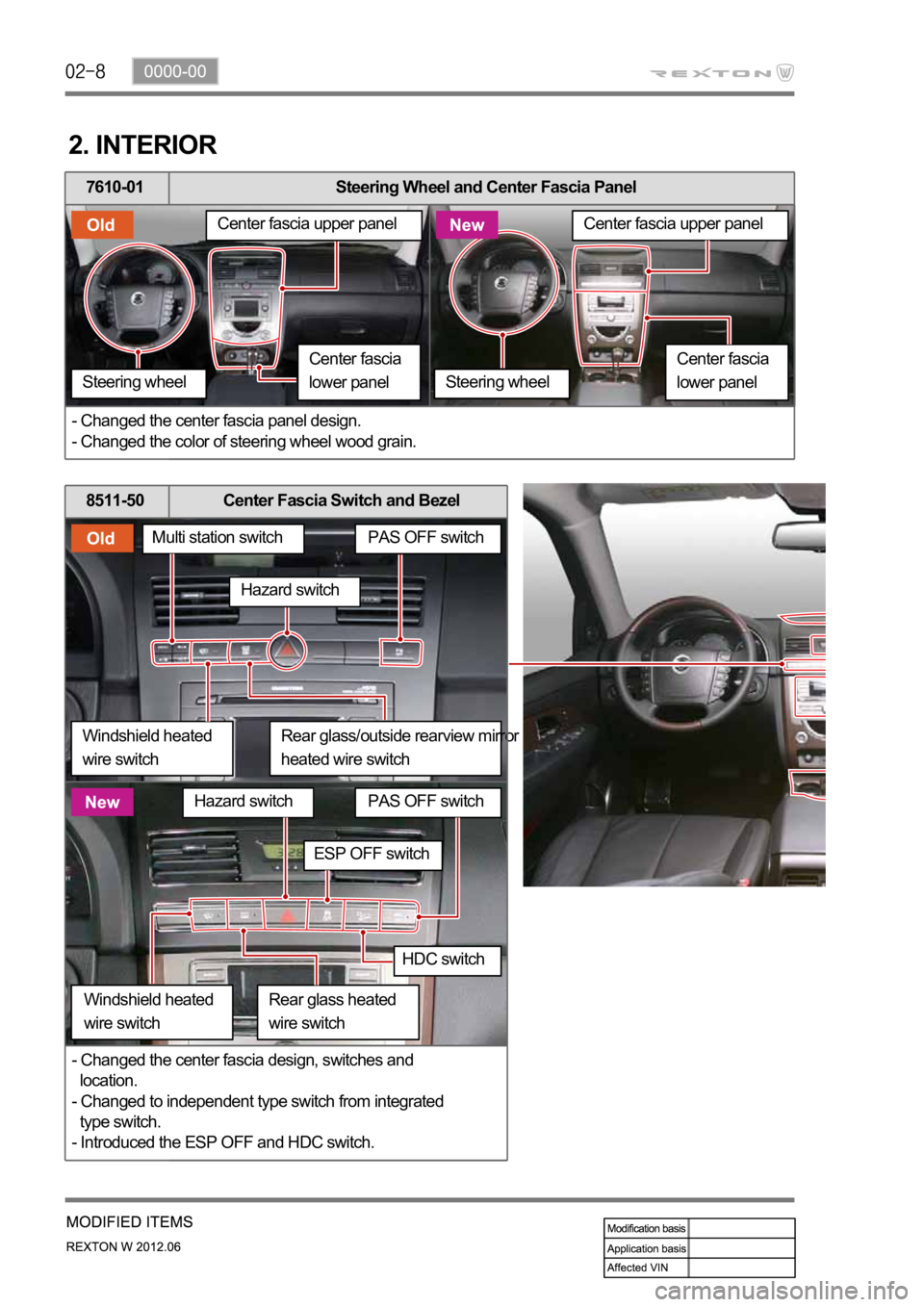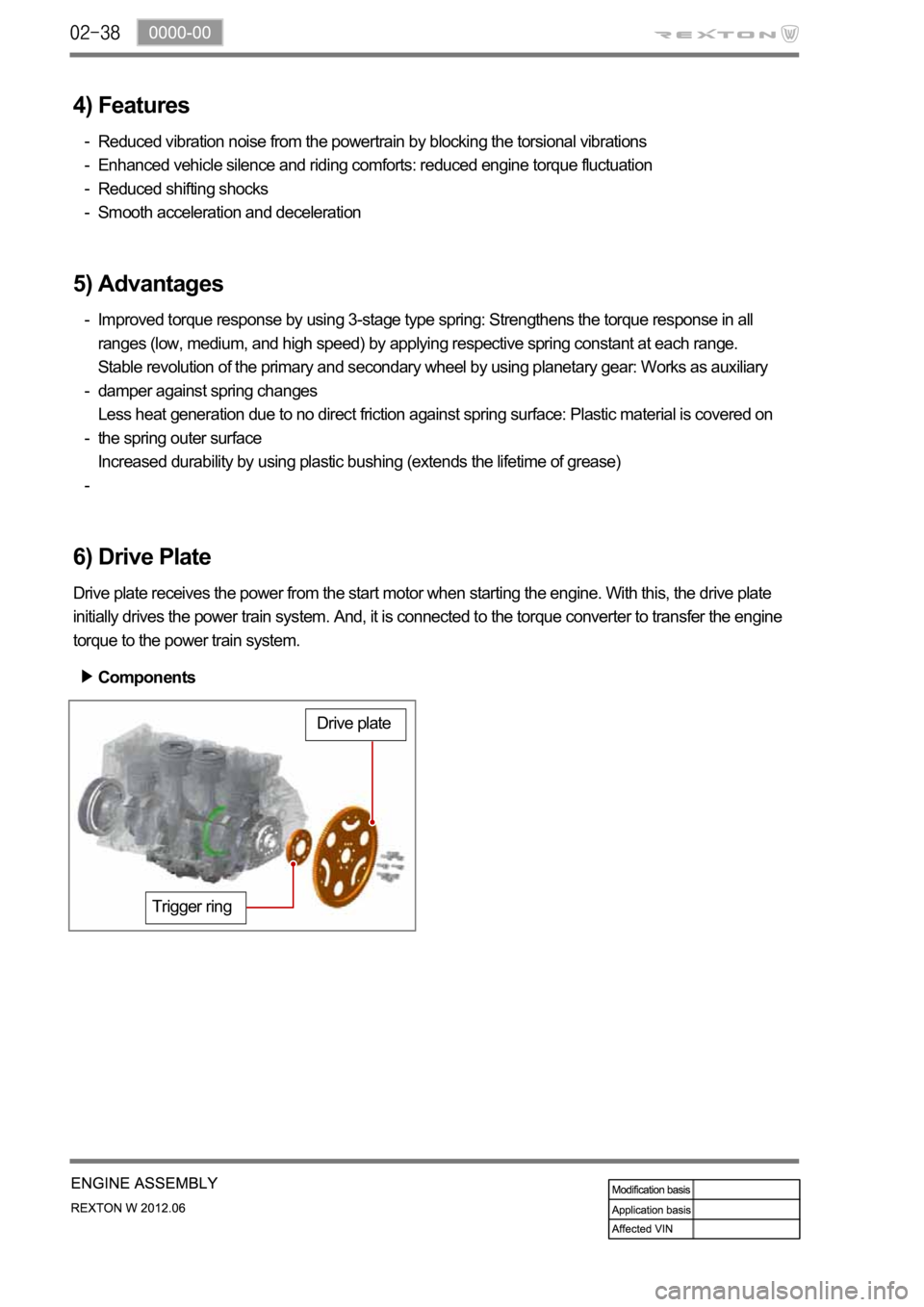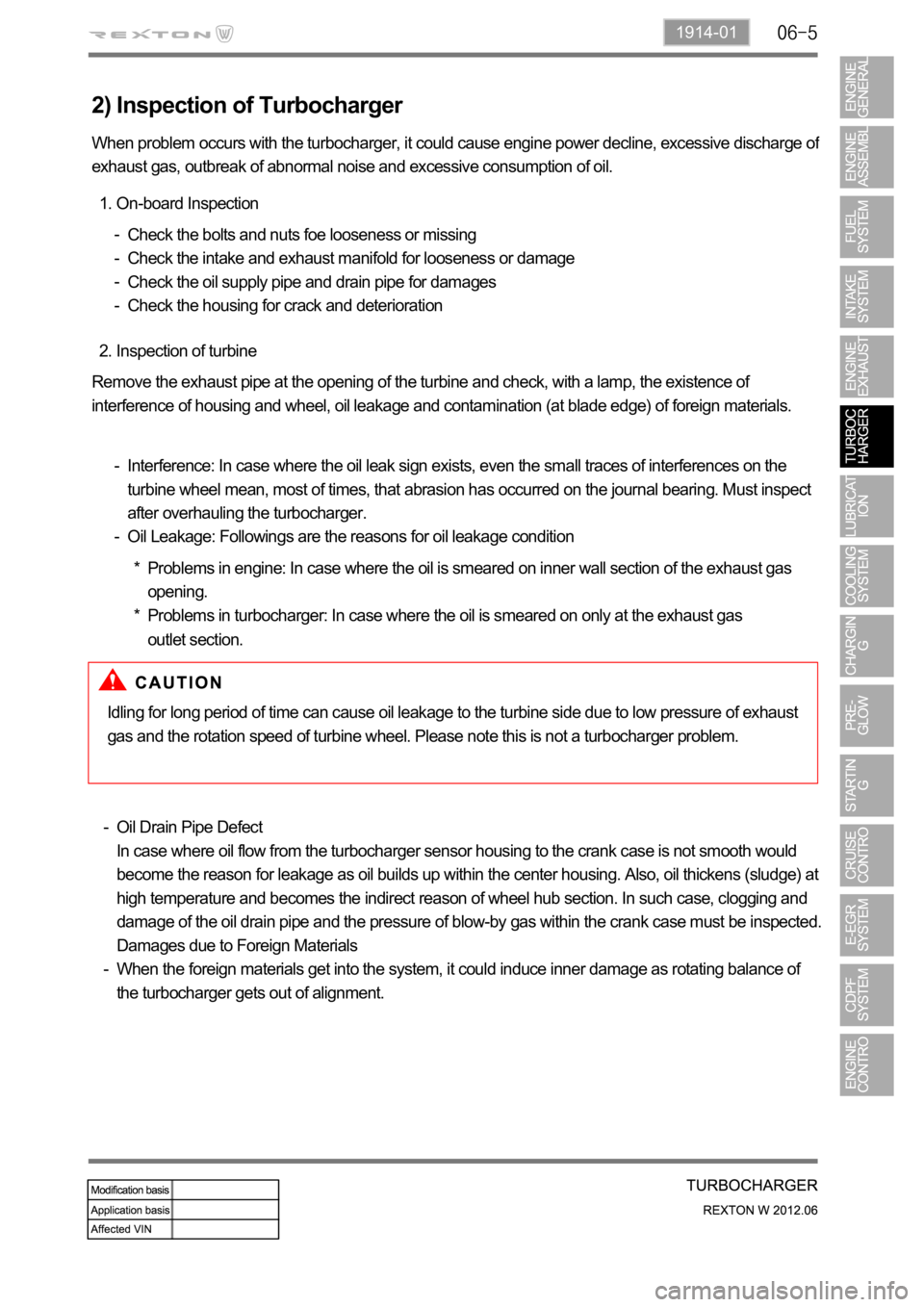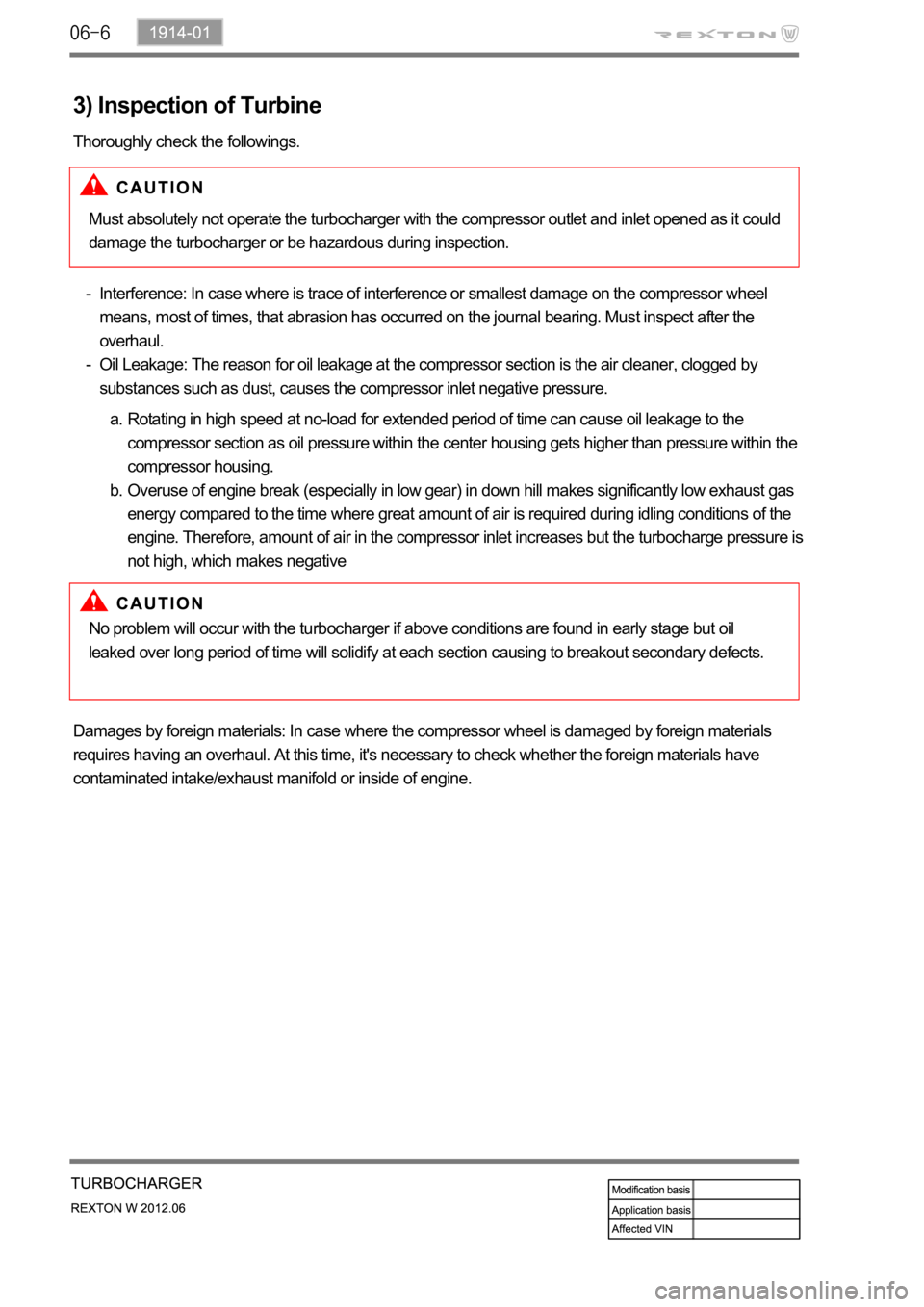wheel SSANGYONG NEW REXTON 2012 Service Manual
[x] Cancel search | Manufacturer: SSANGYONG, Model Year: 2012, Model line: NEW REXTON, Model: SSANGYONG NEW REXTON 2012Pages: 600, PDF Size: 73.29 MB
Page 171 of 600

5720-03 Fender Panel &
Side Repeater Lamp
- Changed the fender panel design
according to the changes of head lamp
and front bumper.
- Moved the side repeater lamp to the
outside rearview mirror.
7930-11 Door Garnish
- Deleted the front and rear door garnishes.
7931-20 Side Lower Step
- Changed the side lower step design.
Side repeater lamp
Side
7110-10 Door Outside Handle
- Changed the door outside handle design.
7931-06 Front Wheel Arch Garnish
- Changed the front wheel arch garnish
design.
Page 172 of 600

0000-00
7931-09 Rear Wheel Arch Garnish
- Changed the rear wheel arch garnish
design.
4170-34 Wheel
- Added the wheel types (sputtering type &
diamond cut type). Standard wheel: Alloy
wheel
- Unify the wheel & tire specification
(255/60R18)
7931-01 Side Sill Garnish
- Changed the garnish design (from
independent type to integrated type).Diamond cut typeSputtering type
5210-18 Side Outer Rear Panel
- Changed the side outer rear panel design
according to the changes of rear combination
lamp.
Page 175 of 600

2. INTERIOR
Center fascia upper panel
Center fascia
lower panel
Steering wheel
Center fascia upper panel
Center fascia
lower panel
Steering wheel
7610-01 Steering Wheel and Center Fascia Panel
- Changed the center fascia panel design.
- Changed the color of steering wheel wood grain.
Multi station switch
Hazard switch
Windshield heated
wire switchRear glass/outside rearview mirror
heated wire switch
PAS OFF switch PAS OFF switch
Hazard switch
HDC switch
ESP OFF switch
Windshield heated
wire switchRear glass heated
wire switch
8511-50 Center Fascia Switch and Bezel
- Changed the center fascia design, switches and
location.
- Changed to independent type switch from integrated
type switch.
- Introduced the ESP OFF and HDC switch.
Page 181 of 600

4. ENGINE AND CHASSIS
4190-06 Wheel Module
- Added the wheel module in each
wheel according to introduction of
TPMS.
1491-01 Engine Control Unit
- Changed the logic according to
introduction of TPMS.
4190-13 TPMS Unit
- Installed TPMS unit with antenna
according to introduction of TPMS.
Page 271 of 600

2. TIGHTENING TORQUE
Component SizeBolt
QuantitySpecified torque
(Nm)Remark
(Total torque)
Main bearing cap
10 Not re-usable
Connecting rod cap
850 to 80 Nm
Rear cover
6-
Oil pump
3-
Flywheel
860 to 100 Nm
Crankshaft center bolt
1660 to 720 Nm
Not re-usable
Oil pan
18-
2-
2-
2-
2-
HP pump main nut
1-
HP pump bolt
3-
Cylinder head
12 85Nm-
Camshaft cap
16-
4-
Exhaust stud bolt 10
-
Exhaust sprocket bolt
1-
Chain tensioner screw
bolt
1-
Coolant temperature
sensor1
-
Auto tensioner
1-
1-
Coolant pump
1-
Page 303 of 600

9. DUAL MASS FLYWHEEL (DMF) & DRIVE PLATE
1) Overview
Flywheel is installed on crankshaft. When
starting the engine, this functions as follows:
Reducing the irregular speed of crankshaft
due to unbalanced combustion -> Improving
the power train NVH, Improving the driving
performance
Reducing the clutch noise by using ball
bearing
Improving the durability of DMF by using
strong arch spring -
-
-
2) Layout
Spring guide
Drive plate
Primary cover
Primary flywheel
Internal/external ringSecondary flywheel
Ring gear
Page 304 of 600

0000-00
Torque change curve of engine and drive shaft
Compression stroke Combustion stroke
Small changes from engine (k):
Damper increases the torque changes to clutchLarge changes from engine (j):
Damper decreases the torque changes to
transaxle by absorbing the impact
3) Operation
Compensating the irregular operation of engine: The secondary flywheel operates almost evenly so
does not cause gear noises
The mass of the primary flywheel is less than conventional flywheel so the engine irregularity
increases more (less pulsation absorbing effect).
Transaxle protection function: Reduces the torsional vibration to powertrain (transaxle) by reducing
the irregularity of engine. -
-
-
Page 305 of 600

4) Features
Reduced vibration noise from the powertrain by blocking the torsional vibrations
Enhanced vehicle silence and riding comforts: reduced engine torque fluctuation
Reduced shifting shocks
Smooth acceleration and deceleration -
-
-
-
5) Advantages
Improved torque response by using 3-stage type spring: Strengthens the torque response in all
ranges (low, medium, and high speed) by applying respective spring constant at each range.
Stable revolution of the primary and secondary wheel by using planetary gear: Works as auxiliary
damper against spring changes
Less heat generation due to no direct friction against spring surface: Plastic material is covered on
the spring outer surface
Increased durability by using plastic bushing (extends the lifetime of grease) -
-
-
-
6) Drive Plate
Drive plate receives the power from the start motor when starting the engine. With this, the drive plate
initially drives the power train system. And, it is connected to the torque converter to transfer the engine
torque to the power train system.
Trigger ring
Drive plate
Components
Page 356 of 600

1914-01
2) Inspection of Turbocharger
When problem occurs with the turbocharger, it could cause engine power decline, excessive discharge of
exhaust gas, outbreak of abnormal noise and excessive consumption of oil.
On-board Inspection 1.
Check the bolts and nuts foe looseness or missing
Check the intake and exhaust manifold for looseness or damage
Check the oil supply pipe and drain pipe for damages
Check the housing for crack and deterioration -
-
-
-
Inspection of turbine 2.
Remove the exhaust pipe at the opening of the turbine and check, with a lamp, the existence of
interference of housing and wheel, oil leakage and contamination (at blade edge) of foreign materials.
Interference: In case where the oil leak sign exists, even the small traces of interferences on the
turbine wheel mean, most of times, that abrasion has occurred on the journal bearing. Must inspect
after overhauling the turbocharger.
Oil Leakage: Followings are the reasons for oil leakage condition -
-
Idling for long period of time can cause oil leakage to the turbine side due to low pressure of exhaust
gas and the rotation speed of turbine wheel. Please note this is not a turbocharger problem.
Oil Drain Pipe Defect
In case where oil flow from the turbocharger sensor housing to the crank case is not smooth would
become the reason for leakage as oil builds up within the center housing. Also, oil thickens (sludge) at
high temperature and becomes the indirect reason of wheel hub section. In such case, clogging and
damage of the oil drain pipe and the pressure of blow-by gas within the crank case must be inspected.
Damages due to Foreign Materials
When the foreign materials get into the system, it could induce inner damage as rotating balance of
the turbocharger gets out of alignment. -
-Problems in engine: In case where the oil is smeared on inner wall section of the exhaust gas
opening.
Problems in turbocharger: In case where the oil is smeared on only at the exhaust gas
outlet section. *
*
Page 357 of 600

3) Inspection of Turbine
Thoroughly check the followings.
Must absolutely not operate the turbocharger with the compressor outlet and inlet opened as it could
damage the turbocharger or be hazardous during inspection.
Interference: In case where is trace of interference or smallest damage on the compressor wheel
means, most of times, that abrasion has occurred on the journal bearing. Must inspect after the
overhaul.
Oil Leakage: The reason for oil leakage at the compressor section is the air cleaner, clogged by
substances such as dust, causes the compressor inlet negative pressure. -
-
Rotating in high speed at no-load for extended period of time can cause oil leakage to the
compressor section as oil pressure within the center housing gets higher than pressure within the
compressor housing.
Overuse of engine break (especially in low gear) in down hill makes significantly low exhaust gas
energy compared to the time where great amount of air is required during idling conditions of the
engine. Therefore, amount of air in the compressor inlet increases but the turbocharge pressure is
not high, which makes negative a.
b.
No problem will occur with the turbocharger if above conditions are found in early stage but oil
leaked over long period of time will solidify at each section causing to breakout secondary defects.
Damages by foreign materials: In case where the compressor wheel is damaged by foreign materials
requires having an overhaul. At this time, it's necessary to check whether the foreign materials have
contaminated intake/exhaust manifold or inside of engine.